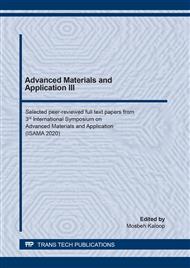p.1
p.6
p.12
p.18
p.23
p.29
p.34
p.41
Roll Casting and Die Casting of Si-Added Al-Mg Alloy
Abstract:
Si ranging from 0.2 mass% to 2.0 mass% was added to Al-5%Mg alloy (5182) and strip was cast by a vertical type high-speed twin-roll caster at a speed of 80 m/min. The as-cast strip was cold-rolled down to 1 mm thickness and annealed. The mechanical properties were investigated using cup tests and tension tests. The limiting draw ratio (LDR) of the 5182 alloy was 2.0 and the LDR became smaller as the Si content increased. When the Si content was 2.0 mass%, the LDR was 1.8, which shows that Si-added 5182 can be used for sheet forming, if the Si content is less than 2.0 mass%. The tensile strength and elongation were almost constant when the Si content was less than 1 mass%, but decreased at 2.0 mass% Si. However, the elongation was greater than 20% at 2.0 mass% Si. For die casting, 2.0 mass% Si was determined as the appropriate content from the results of the tension tests. When the Si content is in the range from 1.0 mass% to 2.0 mass%, then the Si added Al-5%Mg has the ability to be used for both die casting and sheet forming.
Info:
Periodical:
Pages:
12-17
Citation:
Online since:
August 2020
Authors:
Keywords:
Price:
Сopyright:
© 2020 Trans Tech Publications Ltd. All Rights Reserved
Share:
Citation:


